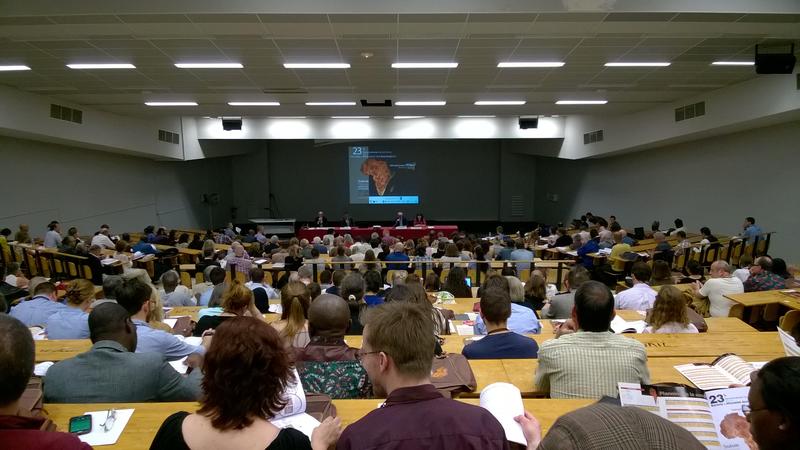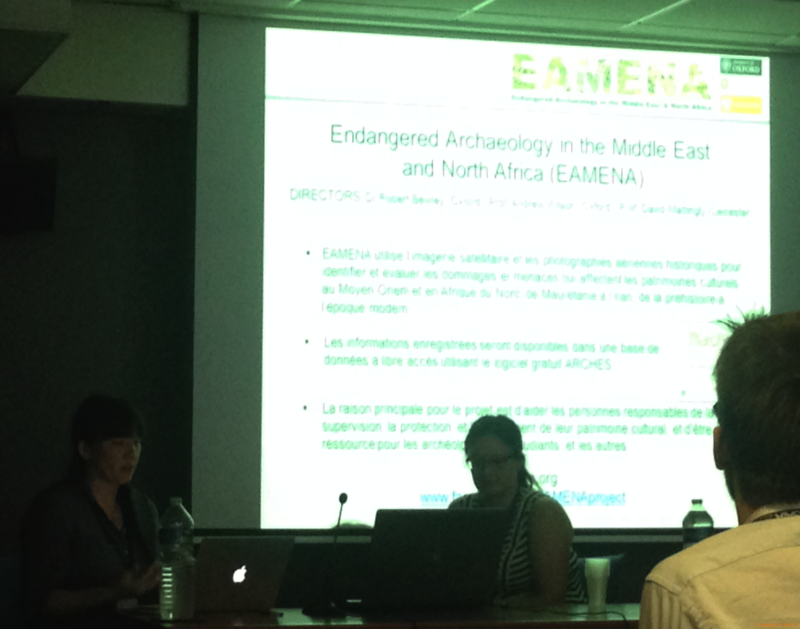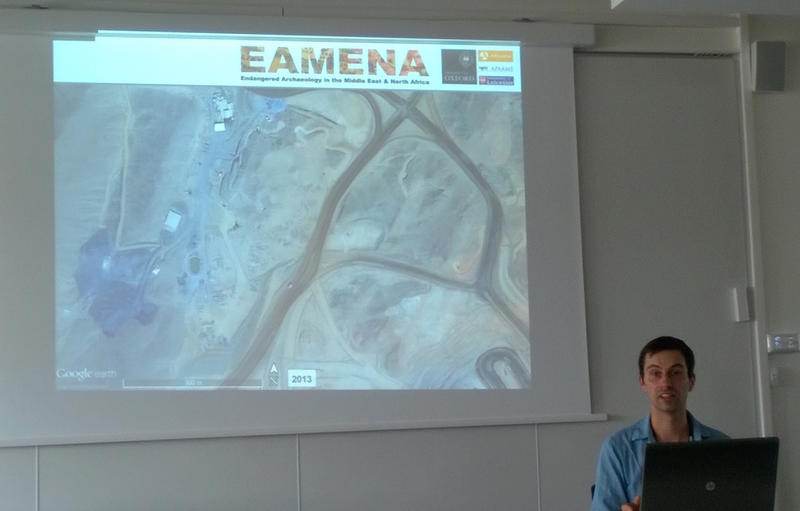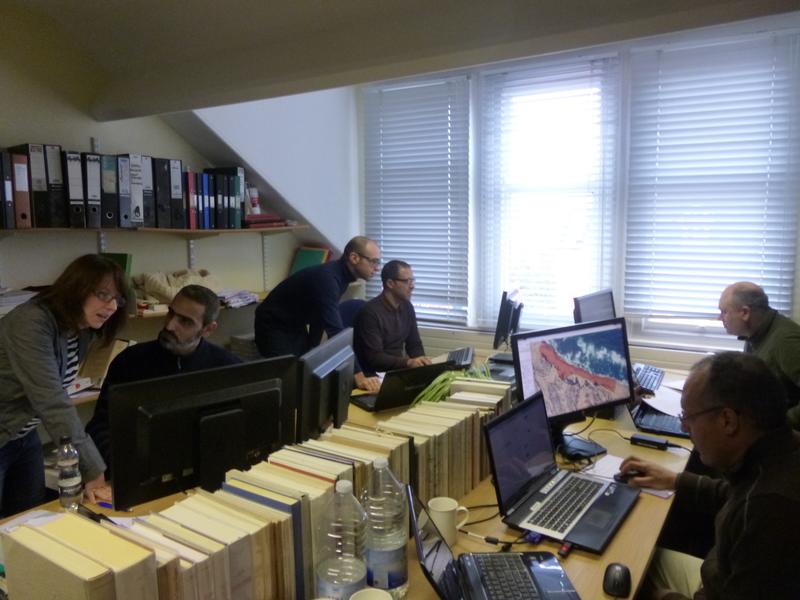SAfA 2016: Toulouse
Posted 20/7/2016
Nichole Sheldrick, Louise Rayne, & Michael Fradley report on SAfA 2016: Toulouse
Between 26 June and 1 July, three EAMENA team members – Michael Fradley, Louise Rayne, and Nichole Sheldrick – attended the 23rd Biennial Meeting of the Society of Africanist Archaeologists (SAfA), hosted at the Université Toulouse – Jean Jaurès in Toulouse, France. Over five days, more than 600 participants presented research and engaged in discussion about African archaeology, across 41 different sessions devoted to topics ranging from late Pleistocene human dispersals, the trans-Atlantic slave trade, rock art, heritage management, and much more (the full programme and abstracts can be found here).
The future of Africa’s heritage was a major theme and point of discussion throughout most of the conference. It was an amazing opportunity to be able to take part in these discussions and hear the perspectives of colleagues from across the African continent on subjects including the benefits and limitations of using automatic classification methods to record archaeology, on community archaeology, and on ways in which archaeological sites can be recorded in databases. We also took the opportunity to connect with other heritage projects and institutions, including the African Rock Art Image Project (British Museum) and the Museum of Islamic Art, Cairo.
Our team gave two papers. First, in a session on Spatial Archaeometry: Applications in Africa, Louise and Nichole presented a paper entitled, ‘A Remote Sensing Methodology for Mapping Endangered Archaeology in the Middle East and North Africa’, introducing EAMENA’s work and remote-sensing methodology, and in particular, how this has so far been applied to the archaeology of Libya.
The following day, in a session entitled Archaeology, Land-use Planning and Heritage Legislation in Africa, Michael presented a paper on EAMENA’s work in the Eastern Desert of Egypt (‘Seeing across the Sands: Heritage Management and Satellite Imagery Analysis in Egypt’s Eastern Desert’). This paper sought to illustrate with a specific group of case studies how the techniques employed by the EAMENA team can be instrumental in gathering data on monument conditions.
Our papers generated discussion about how best to approach issues of heritage destruction and management, and it was encouraging to hear that many people were interested in EAMENA’s approach, with a number of people even asking whether we would be expanding our remit to the rest of Africa, or how they could create something similar in their own countries. In particular, two important questions were asked in relation to our approach that we are keen to address.
The first was the question of sustainability and longevity of the project. With such a large area to cover, it is a legitimate question as to how we expect to not only record sites from across these regions, but also continue to go back and monitor their condition over the coming years, and even decades. The simple answer is that we don’t expect to be able to do that, at least not on our own. The only way that our project can succeed in the long-term is through collaboration with, most importantly, the heritage administrations and officials of the countries in which we work, but also through the work of other archaeologists, research projects, universities, and students with whom we are establishing relationships through data-sharing and training. For example, we have already established a collaborative relationship with archaeologists in Libya, and were recently able to co-sponsor with the Libyan Antiquities at Risk project a week-long workshop in Oxford and Leicester to train four Libyan colleagues in our methodologies. It is very much our hope to develop a platform that in the long run might be adopted and ultimately taken over by professional archaeologists in the countries in question, and we are actively working to make the contacts necessary to achieve this goal.
A second issue which was quite rightly brought up in relation to the use of remote sensing to rapidly record archaeology throughout Africa is the question of the ethics of recording and publishing these data in open-access databases. In a world of rapid digitisation and open-access information this is an extremely important but complicated issue. The availability of high-resolution satellite imagery in the public domain through platforms like Google Earth Pro means that these data are freely available to anyone, so we feel that, to a certain extent, we are justified in using them. However, we are also keenly aware that we have a duty to use these sources responsibly and that there is a wide range of opinions existing in the MENA region on the subject that must be acknowledged and discussed.
To address this issue, EAMENA’s approach so far has been to initiate conversations with heritage officials in all of the countries in which we are working to introduce them to our project, to gather their opinions about our approach, and to find ways to collaborate. We are also developing ways in which our database will be able to put restrictions on who can access what types of data and for this function to be customisable and adjustable to the needs and wishes of different countries. It is of utmost importance to us that the people in these countries are comfortable with the amount of information that is available about their heritage to the public, whether that is all of it, none of it, or anywhere in between. The most important thing is that we want to make sure that we are creating something that is first and foremost useful for and beneficial to the people in the MENA region.

Figure 1: The opening address of the conference. (photo Nichole Sheldrick)

Figure 2: Nichole and Louise introducing EAMENA (photo Michael Fradley)

Figure 3: Michael discussing mining in the Eastern Desert of Egypt (photo Nichole Sheldrick)

Figure 4: Training Libyan colleagues in Leicester (photo Louise Rayne)



